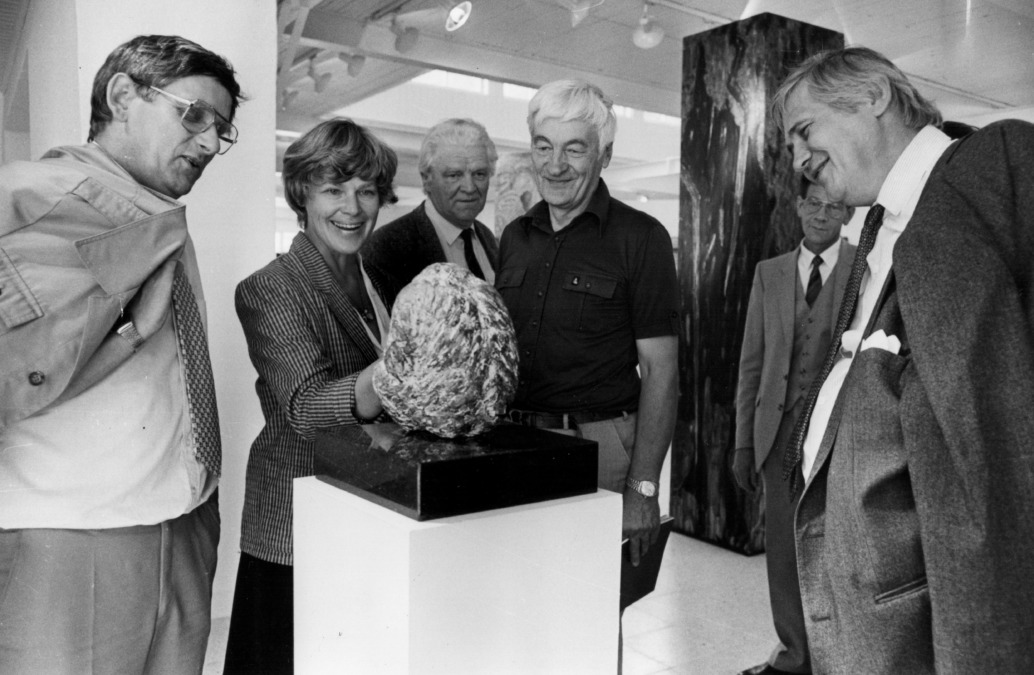During the 1980’s artists started finding their way to the quiet ironworks of Fiskars. One main attraction was the Expohja art exhibition that was held in the old Cutlery Workshop, later known as the Copper Smithy. The artists got inspired by the green luscious area of the old iron works and the river that flows through it. Some of the artists found their own paths into Fiskars and were scouting for a good place to live with the help of Pojo municipal director Kalle Lindqvist. Others came to Fiskars thanks to Ingmar Lindberg, the vice CEO of the Fiskars corporation, and his project to attract people to the ironworks.
The former Cutlery Workshop played a big part when industrial activity came to an end in Fiskars, and was replaced by art and handicrafts. In the 1980s, the building was renamed the Copper Smithy. The forging of copper had ended a long time ago, and the old copper foundry had become a cutlery mill. Pohjan ruukkiasunnot purchased the Copper Smithy in 1984 as part of a business deal to buy properties in Fiskars and Billnäs. Exhibitions started taking place in the Copper Smithy, and the Onoma cooperation also held their exhibitions in the building. The Expohja-exhibitions ended due to financial difficulties, and exhibitions in Fiskars came to a temporary pause.

By the end of 1993, a group of locals in Fiskars gathered to plan a new exhibition in the Copper Smithy. The group consisted of Barbro Kulvik, Antti Siltavuori, Timo Vesara, Kari Virtanen and exhibition secretary Marketta Miettinen. The exhibition, planned with great enthusiasm, was named “1. näyttely” (the first exhibition), and it showcased works from 32 artists, artisans and craftsmen. The exhibition was a success and had 7800 visitors, a sign of what was to come.
As this activity grew, so grew the need for a more organized system of management. Thus, the cooperation was founded. Satu Tamminen has been regarded as the person behind this idea. Erik Båsk, who had worked as an exhibition assistant for a few years, was chosen as the executive manager. The cooperative was founded in 1996, and the amount of members grew rapidly. It had 30 members upon founding, and double the amount the following year. To become a member, one had to either live or work in Fiskars. The members consisted of artists, designers and craftsmen.
The cooperation worked closely with the Fiskars corporation, and vice CEO Ingmar “Inko” Lindberg was chosen as chairman of the cooperation. An art- and design shop was also opened in the newly renovated Clock Tower Building. Barbro Kulvik suggested the name OMA (own) for the shop, but this name was already reserved for Valio’s dairy products. Kulvik suggested that the word ON (is) would be added first, so that the name would be ONOMA (is own). This name is a great representation of the idea of the cooperative.
